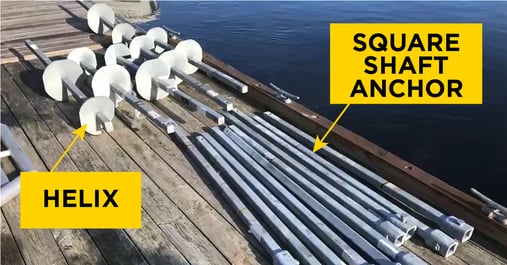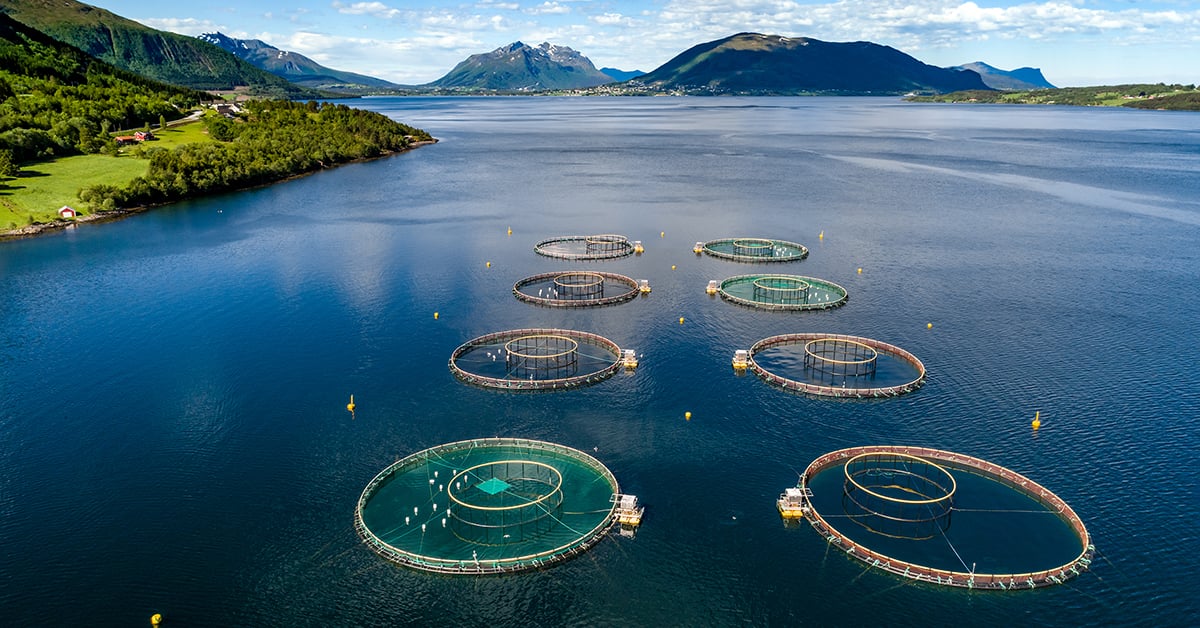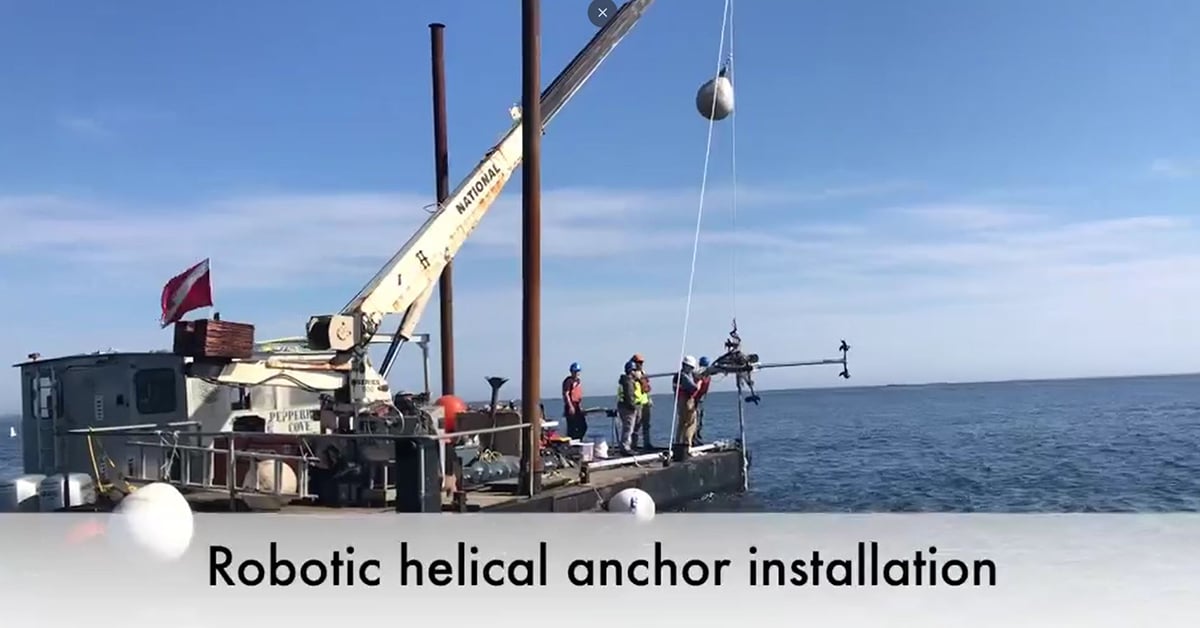An early use for helical anchors in marine environments was to secure oil pipelines to the ocean floor. This successful and cost-effective use of helical anchors in high-load situations then led to the use of these anchors for mooring boats and docks. More recently, aquaculture industry pioneers have recognized the helical anchor’s advantages for protecting their investments in equipment and stock (see below for a long list of uses for helical anchors in marine applications!)

Various square shaft and round shaft anchors sizes and types are available to ensure suitable product selection for the required load to secure. Anchors can serve not only as corner posts to resist tension loads created by wind and water but will also simultaneously provide compression support to keep equipment from resting on the beach.
“We have been using a helix mooring system for both suspended and bottom culture of scallops and oysters for the last two years with excellent results. The overall performance with respect to economics, reliability, and ease of installation have proven to be superior to existing alternatives for our operations on Nantucket,’’ said Frank Dutra, Director of Aquaculture in Vineyard Haven, Massachusetts.
In a pull test at Vineyard Haven, observed by harbormasters and other independent parties, the helical anchor far surpassed the holding power of competing technologies, as shown in the following results:
|
Pull Test Results - Vineyard Haven, MA
|
|
Mooring Type
|
Bottom Condition
|
Breakout Force
|
|
350-lb Mushroom
|
5 ft. deep in mud
|
2,000 lb
|
|
500-lb Mushroom
|
In sand bottom
|
1,700 lb
|
|
3000-lb Concrete USCG block
|
Set in mud
|
2,100 lb
|
|
6000-lb cement block
|
On sand bottom
|
3,200 lb
|
|
8/10 Square Shaft Helical Anchor
|
Soft clay mud
|
20,800+ lb
|
Simple Installation Procedures
The helix on a helical anchor basically works like a giant screw which is rotated in the ground. Square shaft anchors are installed with a torque motor taken below and operated by a diver. These installations may be in depths exceeding 100 feet. In shallower waters, the motor can be mounted on a small barge. With the use of drive tools, the entire installation can be managed from the surface.
Round Shaft anchors can be installed by hand with the mechanical advantage of a pipe or other turning bar. These anchors can deliver significant holding capacity in competent soils. These anchors are available with a single 6-, 8- or 10-inch- diameter helix on a 5-1/2-foot-long shaft.
Watch a robotic helical anchor installation:
Once installed, anchor stays put. Unlike a block or mushroom anchor, a Chance® helical anchor is not affected by a sloped bottom and will not “drag” under heavy gusts/forces.

Sustainable Anchors Minimize Environmental Impact
Helical anchors have many advantages over concrete (keep reading to learn about a few of them). In one salmon farm application, nine Chance anchors replaced 14 concrete blocks (5,000 Ib. each) to secure an ice barrier protecting a surface salmon cage. The concrete blocks had been sliding under the load of the ice pressing against the barrier. Anchors, on the other hand, provide a stay-in-place system that does not drag and will not scour the seafloor.
Cement, the number one ingredient in concrete, is harmful to the earth, ranking third in industrial pollution, according to the U.S. EPA. Furthermore, when concrete sea anchor blocks slide, they tear up the seafloor with it, causing great damage to marine ecosystems. Eco-friendly helical anchors have a small footprint, screwing into the sea floor with little disturbance to the soil or marine life.
Helical anchors are made from recycled steel with a hot-dipped galvanized finish. Since their holding strength is dependent on the ground they are screwed into, the anchors themselves are relatively lightweight and easy to transport and move, reducing mobilization and installation costs.

Applications
Helical anchors are versatile and used for many underwater applications including:
- Long-line grow-out systems
- Open water, submersible fish cages
- Ice barrier protection
- Growing equipment
- Growing drums
- Trident cages
- Floating docks
- Fixed walkways
- Floating breakwaters
- Bulkheads
- Pipelines
- Seaweed farms
- Storm moorings
- Floating ice barriers
- Shellfish long lines
- Finfish cages
- Single-point boat moorings
- Navigation and boundary buoys
- Mediterranean-style boat moorings
(If you have tried other marine applications for helical anchors, we’d love to hear about it! Send us a message!)

KEY BENEFITS:
Sustainable:
- Minimal marine disturbance
- Can eliminate concrete entirely
- No excavation or spoil removal
Reliable:
- Can resist axial/lateral/moment loading
- Load capacity based on torque correlation
- Instant torque-to-capacity feedback for production control
Economical:
- Quick and easy installation using standard hydraulic equipment
- Immediate loading - no waiting for concrete to cure
- Remove and reuse the foundation with minimal disturbance.
- Installs in most weather conditions, even below freezing
To learn more about helical anchors, contact your local distributor or send us your questions or comments via email or visit www.helixmooring.com








